Photography can reveal a wealth of information about endangered species. You'll see their habitats from an aerial perspective, allowing you to understand the scale of ecosystems. It helps track population sizes and migration patterns without disturbing wildlife. Through remote cameras and ethical techniques, you can observe natural behaviors up close. Photography also exposes threats like poaching and environmental degradation. You'll witness the impacts of climate change and urban encroachment on habitats. From coral bleaching to deforestation, images capture the challenges these species face. This visual evidence is essential for conservation efforts and raising awareness. Explore further to discover how photography is revolutionizing wildlife protection.
Aerial Perspective on Wildlife Habitats
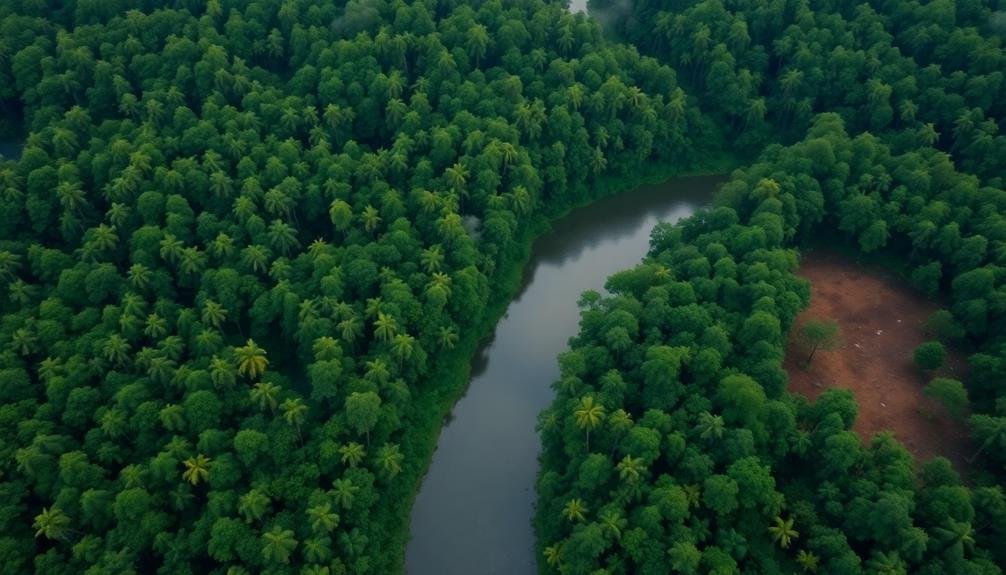
Vastness unfolds beneath the camera lens as aerial photography reveals the true scale of wildlife habitats. You'll witness entire ecosystems from above, gaining a unique perspective on the interconnectedness of landscapes.
Aerial shots capture the intricate patterns of forests, rivers, and grasslands that endangered species call home. From this vantage point, you'll spot the telltale signs of human encroachment.
Fragmented habitats become glaringly apparent, with roads and urban developments carving through once-pristine wilderness. You'll see how deforestation creates isolated patches of greenery, limiting the range of animals and disrupting migration routes.
Aerial photography also highlights the positive impact of conservation efforts. You'll observe protected areas standing out as oases of biodiversity amidst altered landscapes.
These images serve as powerful tools for raising awareness and influencing policy decisions.
Population Tracking From Above
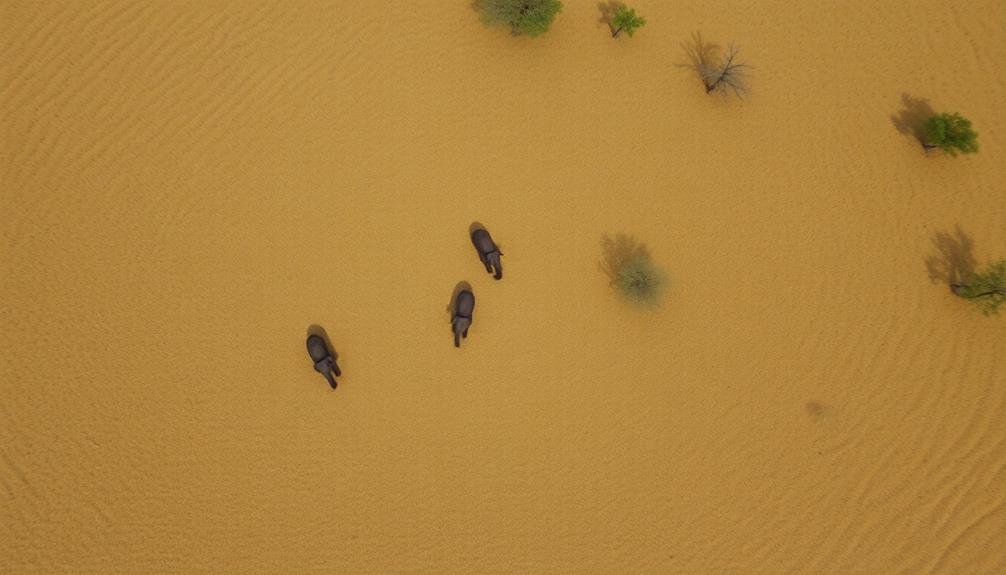
Numerous endangered species benefit from aerial population tracking techniques. You'll find that these methods offer a non-invasive way to monitor animal populations over large areas. By using aircraft or drones equipped with high-resolution cameras, you can capture detailed images of wildlife in their natural habitats.
You'll see how this approach is particularly useful for tracking migratory species or those living in remote, inaccessible regions. For example, you can count elephant herds in African savannas or track polar bear movements across Arctic ice. The aerial perspective allows you to spot animals that might be hidden from ground-level observations.
You'll appreciate how these techniques have revolutionized conservation efforts. They provide accurate population estimates, helping researchers understand population trends and distribution patterns. You can use this data to identify threats to species survival and develop targeted conservation strategies.
Moreover, you'll find that aerial tracking can reveal previously unknown information about animal behavior and habitat use. This knowledge is essential for designing effective protection measures and ensuring the long-term survival of endangered species in their natural environments.
Minimizing Human Disturbance

When photographing endangered species, you'll need to prioritize minimizing human disturbance.
You can employ remote camera techniques to capture images without being physically present, and use camouflage and concealment methods to blend into the environment when on-site.
It's essential to follow ethical approach guidelines, which often include maintaining a safe distance, avoiding flash photography, and respecting the animals' natural behaviors.
Remote Camera Techniques
Remote cameras, silent sentinels in the wild, have transformed wildlife photography and conservation efforts for endangered species. These unobtrusive devices allow you to capture intimate moments of elusive creatures without human presence.
You'll find that remote cameras offer unique advantages in studying and documenting endangered species behavior.
When using remote camera techniques, you should consider:
- Camera placement: Choose locations based on animal tracks, droppings, or known habitats
- Trigger mechanisms: Select between motion sensors, infrared beams, or timed intervals
- Weatherproofing: Verify your equipment can withstand harsh environmental conditions
- Ethical considerations: Minimize disruption to natural behaviors and habitats
You'll discover that remote cameras provide invaluable data on population sizes, distribution patterns, and behavioral traits of endangered species.
They're particularly useful for nocturnal animals or those inhabiting inaccessible areas. By analyzing the images captured, you can gain insights into breeding habits, territorial behaviors, and interspecies interactions.
Remote camera techniques have greatly advanced our understanding of endangered species, providing essential information for conservation strategies.
You'll find that this non-invasive approach not only yields stunning photographs but also contributes to the protection and preservation of vulnerable wildlife populations.
Camouflage and Concealment
Masters of disguise, wildlife photographers employ camouflage and concealment techniques to minimize human disturbance when capturing images of endangered species. You'll need to blend seamlessly into the environment to avoid altering animal behavior or causing stress. Start by researching the specific habitat you'll be working in and choose clothing that matches the surroundings.
Invest in a high-quality camouflage suit or ghillie suit, which mimics natural vegetation. Don't forget to cover your face and hands, as these areas often stand out. You can use specialized photography blinds or hides, designed to conceal you and your equipment. These portable structures come in various designs, from pop-up tents to more elaborate setups that resemble natural objects like rocks or trees.
When setting up your position, consider wind direction to minimize your scent. Use natural features like bushes or tree trunks to break up your silhouette.
Position yourself well before the expected arrival of your subject, allowing the area to settle. Remember, patience is key. By mastering these techniques, you'll capture authentic moments of endangered species in their natural habitats without compromising their well-being.
Ethical Approach Guidelines
Beyond camouflage and concealment, ethical guidelines form the backbone of responsible wildlife photography, especially when working with endangered species.
You'll need to prioritize the well-being of your subjects over getting the perfect shot. This means maintaining a respectful distance, avoiding disruption of natural behaviors, and never baiting or manipulating animals for a photo opportunity.
To minimize human disturbance when photographing endangered species, follow these key guidelines:
- Research the species and its habitat beforehand to understand its behavior and sensitivities.
- Use long lenses to capture close-up shots from a safe distance.
- Limit your time in any one area to reduce stress on the animals.
- Never interfere with breeding, feeding, or other critical activities.
Mapping Migration Patterns
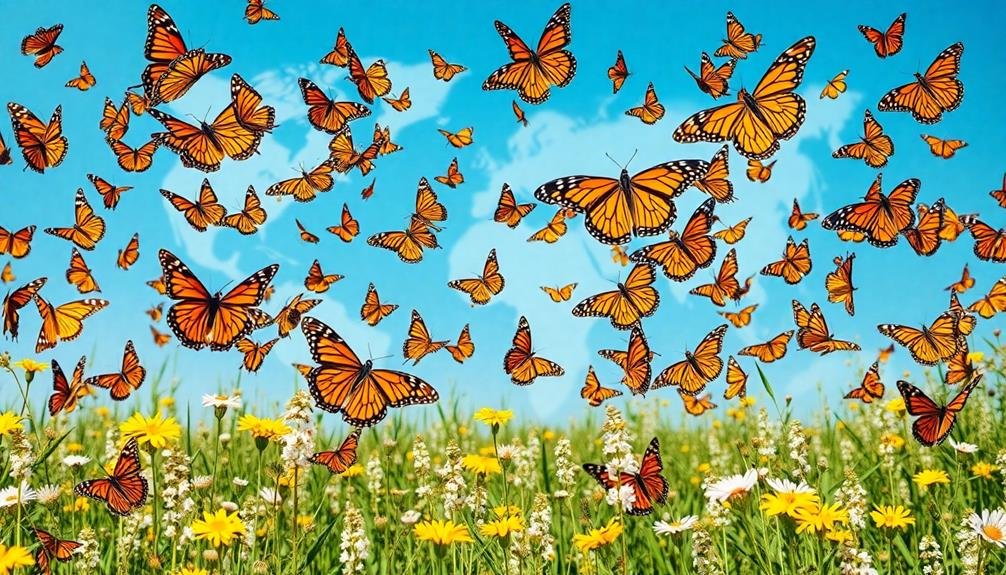
Three cutting-edge technologies have revolutionized the mapping of endangered species' migration patterns.
Satellite tracking devices, now smaller and more efficient than ever, allow you to monitor an animal's movements in real-time. These lightweight tags transmit location data to orbiting satellites, providing unprecedented insights into long-distance migrations.
Drone photography has emerged as a powerful tool for capturing aerial views of migration routes. You can use drones to survey large areas quickly, identifying key stopover sites and potential obstacles along the way. This bird's-eye perspective helps conservationists better understand habitat requirements and threats.
Finally, sophisticated camera trap networks enable you to document wildlife movements across vast landscapes. By strategically placing motion-activated cameras, you'll capture images of animals as they pass through specific areas. This method is particularly useful for shy or nocturnal species that are difficult to observe directly.
When combined with advanced data analysis techniques, these technologies allow you to create detailed maps of migration patterns. You'll uncover previously unknown routes, identify essential habitats, and detect changes in behavior over time.
This information is vital for developing effective conservation strategies and protecting endangered species throughout their journeys.
Detecting Illegal Poaching Activities
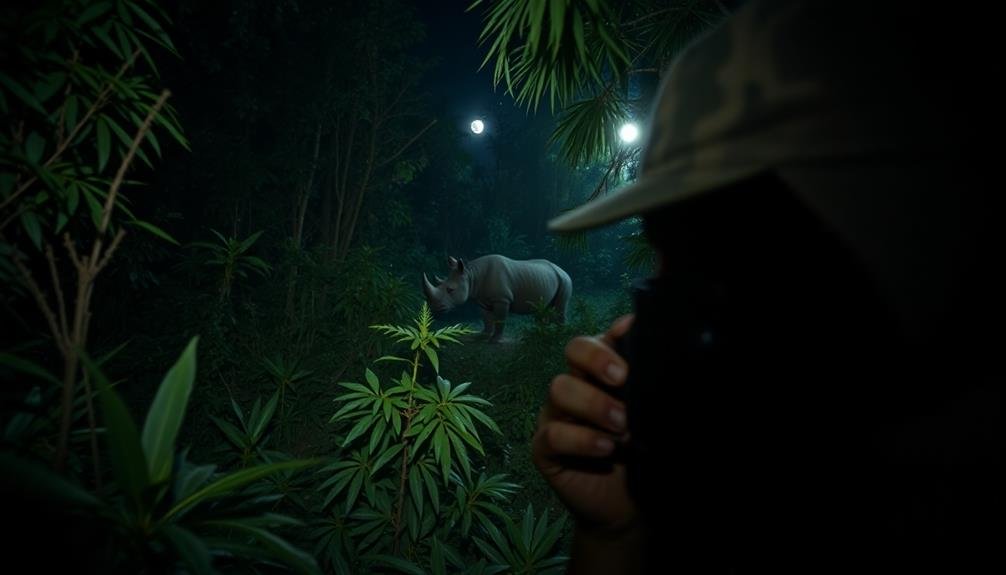
In spite of conservation efforts, illegal poaching remains a significant threat to endangered species worldwide.
Photography plays a vital role in detecting and combating these illicit activities. You'll find that advanced camera traps and surveillance systems are deployed in protected areas to monitor wildlife and catch poachers in the act.
These high-tech tools provide invaluable data for conservation efforts:
- Motion-activated cameras capture clear images of poachers, their vehicles, and equipment
- Thermal imaging cameras detect heat signatures of humans and animals, even in darkness
- Satellite imagery reveals changes in landscape that may indicate poaching activities
- Drones equipped with cameras offer real-time aerial surveillance of vast areas
Assessing Environmental Threats
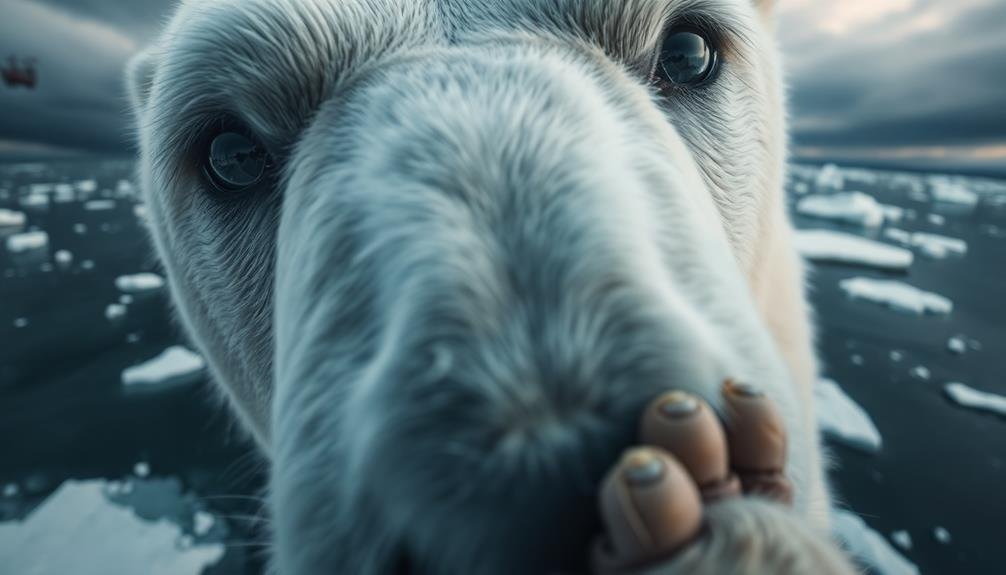
While poaching poses a direct threat to endangered species, photography also plays an essential role in evaluating broader environmental dangers. You'll find that aerial and satellite imagery can reveal habitat loss, deforestation, and urban encroachment on vital ecosystems. These images allow scientists to track changes over time and identify areas at risk.
Photography can capture the effects of climate change on endangered species' habitats. You'll see melting ice caps, rising sea levels, and shifting vegetation patterns through time-lapse photography. These visual records provide compelling evidence of environmental threats and help researchers predict future impacts on vulnerable populations.
You can use underwater photography to document coral bleaching, ocean acidification, and pollution affecting marine species. These images offer a window into the health of aquatic ecosystems and the challenges faced by endangered marine life.
Photography also helps assess the impact of natural disasters on endangered species' habitats. You'll find that images of wildfires, floods, and hurricanes provide significant information for conservation efforts and habitat restoration planning.
Frequently Asked Questions
How Do Photographers Ensure Their Presence Doesn't Stress or Harm Endangered Species?
You'll need to prioritize the animals' well-being. Use long lenses, maintain a safe distance, and limit your time near them. Don't disturb their habitat or routines. Always follow local guidelines and work with conservation experts.
What Specialized Equipment Is Used for Photographing Elusive or Nocturnal Animals?
You'll need specialized gear for elusive or nocturnal animals. Use camera traps, infrared sensors, and night vision equipment. Don't forget telephoto lenses for distant shots and silent shutters to avoid startling your subjects. Waterproof cases protect gear in harsh environments.
How Are Photographs Used to Raise Public Awareness About Endangered Species?
You'll see impactful photos of endangered species in media campaigns, exhibitions, and books. They're used to evoke emotion, educate the public, and inspire action. These images can make distant conservation issues feel personal and urgent.
Can Photography Help in Identifying Individual Animals Within a Species?
You'll find that photography can indeed help identify individual animals. It captures unique markings, scars, and patterns on an animal's body. You're able to track specific creatures over time, aiding in conservation efforts and population studies.
What Ethical Considerations Are Involved in Wildlife Photography of Endangered Species?
You'll need to contemplate animal welfare, habitat disturbance, and potential stress. Don't interfere with natural behaviors or disclose sensitive locations. Always prioritize the species' well-being over getting the perfect shot. Follow local regulations and guidelines.
In Summary
You've seen how photography can be a powerful tool for endangered species conservation. From aerial surveys to migration tracking, it's revolutionizing how we study and protect vulnerable animals. By using these techniques, you're gaining essential insights while minimizing disturbance. Remember, every image you capture could be significant in the fight against poaching and habitat loss. Keep exploring innovative ways to use photography – you're making a real difference for endangered species.

As educators and advocates for responsible drone use, we’re committed to sharing our knowledge and expertise with aspiring aerial photographers.




Leave a Reply